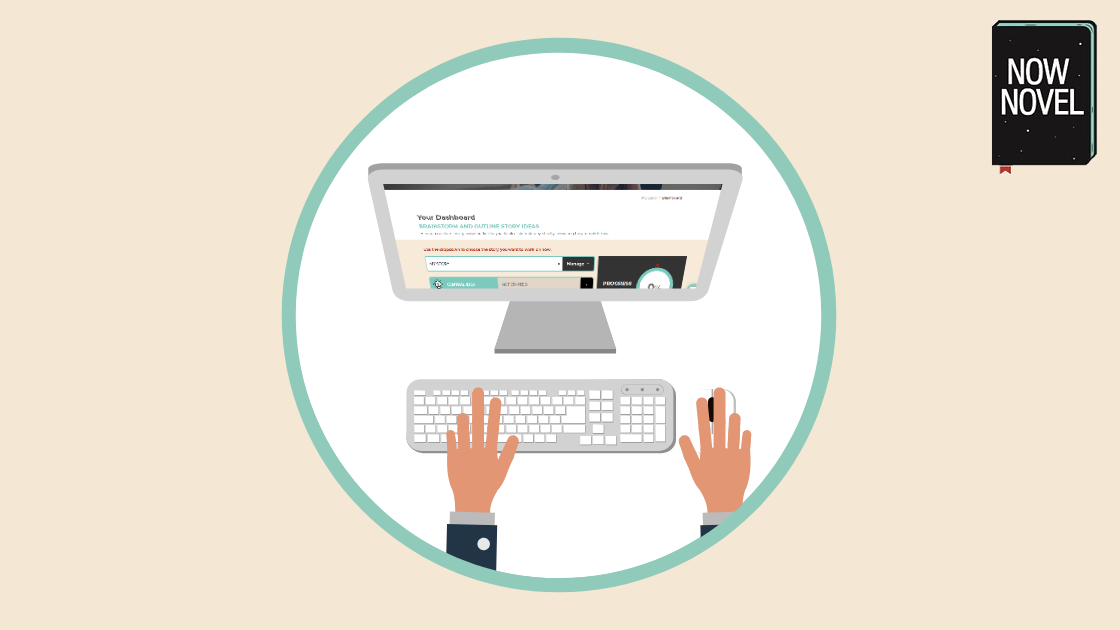Over the past year, we’ve spoken to Now Novel members and visitors to better understand your writing challenges and processes. We’ve funneled the insights people shared into exciting improvements to our story brainstorming and outlining tools, now live. Here are 8 lessons we learned and how we used them to develop a better online writing tool:
1. Flexibility is key to writing and outlining
If you’d prefer to discover the story dashboard by trying it, go here.
In a survey, we asked members what they liked least about the Now Novel process. Some said it was a bit too restrictive or rigid.
The old tool included steps for choosing a ‘story type’ (such as ‘voyage and return’). This approach was based in part on the idea of The Seven Basic Plots by Christopher Booker. [Booker gives a fascinating Jungian analysis of common story structures that recur in fiction.]
The real issue arose in choosing ‘types’ being necessary to proceed. It narrowed down the writer’s path. Sometimes (we learned), members’ stories fought against the classifications and constraints of ‘type’.
For this reboot, we made sure you could jump in anywhere and begin. Or at least read a hint for why the previous step would help.
For further flexibility, we’ve added the option to mark a section complete when you’ve brainstormed the amount you need to write.
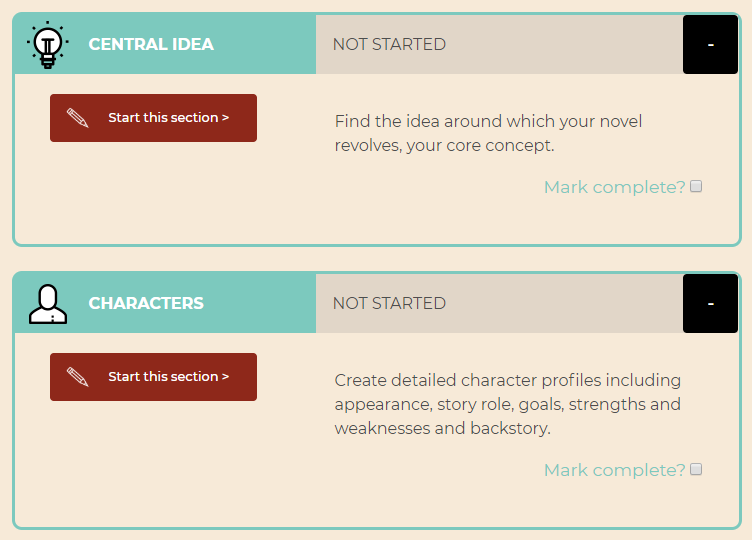
To create more flexibility, we based character profile creation more on function. Functional aspects of characters such as their motivations, goals, backstory, appearance and the stakes (the outcomes they want versus those they want to avoid).
2. Many writers multitask
In Version 1 of the Now Novel process, you could only create one story outline at a time. Our original aim was to encourage members to really commit to their ideas. It’s easy to chase the ‘shiny new thing’, after all!
At the same time, a function to work on multiple outlines at once was one of our most requested features. So we included this feature in our update. After all, it makes sense to be able to work on multiple outlines at once if you’re:
- Writing a series. When you’re creating a complex, multi-novel arc, it helps to think up plot points for each. Who will appear in the story? What are possible strengths, flaws, and stakes in this installment? Some writers start with Book 1 and don’t touch Book 2 until it’s finished. Others like to have a broad series-long outline first.
- Testing and comparing different ideas. Sometimes it’s helpful to develop story ideas you’re struggling to choose between further to see which drives you more.
- Taking a breather. When a story hits a stumbling block, working on a new idea can be a valid breather. Starting a new tack is not always procrastination or ‘giving up’. Sometimes it’s trusting intuition or having learned enough from a practice run to tell an even better story.
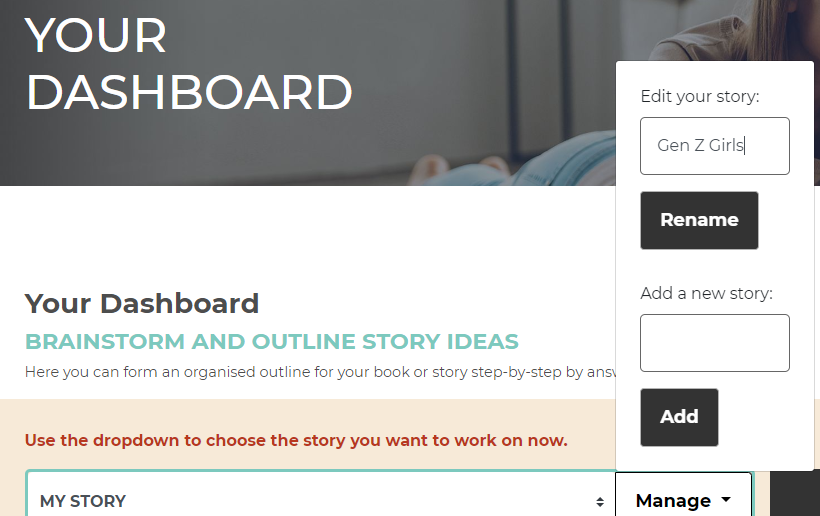
3. Turning off your inner critic in early stages is key
One of the steps we removed from the old process was a ‘Story Tester’ that asked specific questions about your idea so far. The aims of this were twofold:
- To catch non-starters early. Sometimes ideas seem good but when we unravel them further we find there’s not much there. A process of questioning would avoid developing an idea that didn’t seize your imagination and fire your passion (in theory)
- To encourage getting in touch. We wanted members who were asking questions about their ideas (and not sure where to take them) to talk to us and share any uncertainties or questions so we could help, offering suggestions and personal encouragement.
In practice, hindsight revealed that ‘testing’ carried other unwanted connotations, such as finding ‘defects’. So we’ve streamlined the process to shift the focus onto the fun parts – creating, building and imagining.
4. Everyone has something to learn
One of the challenges of creating a story outlining tool is making something that newbies and experienced writers alike find useful. Version 1 of Now Novel’s outlining process assumed your familiarity with terms and concepts such as ‘theme’, ‘tone’, ‘mood’, ‘protagonist’ and more.
The problem was confused members would sometimes ask ‘What’s a protagonist?’ or ‘What is a plot point?’ To simplify and make the process easier, we’ve interspersed links to relevant blog posts explaining concepts in detail throughout the process. Also new is the info button:
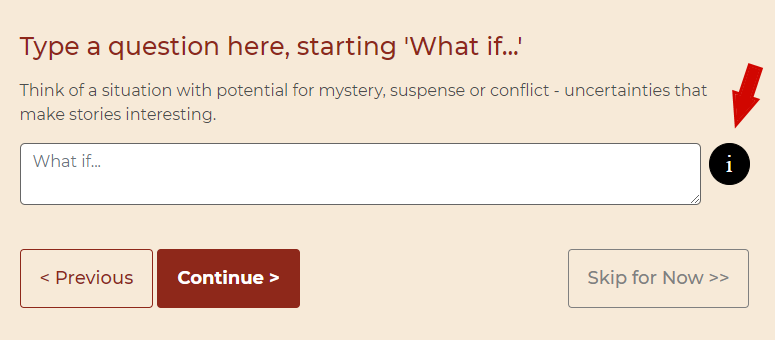
Click it and a tip, example or suggestion will expand, to clarify the step and inspire further ideas. Relevant help is (discreetly) there when you need it.
5. Plotting and organizing ideas can be tough
One of the most frequent responses we get when asking blog visitors what they find tough is ‘developing plot’ or ‘structure, how the pieces fit together’.
There are many ways to approach plot. The old version of our process based brainstorming plot a little too much on ‘types’ and overarching, broad story structures.
We’ve since learned that a ‘big picture first, small picture later’ approach doesn’t work for everyone. It’s the age-old ‘plotter vs pantser’ debate (whether you outline first usually or jump straight into the story and figure it out as you go).
With all the above in mind, we’ve made it easier to ‘pants’ your way through creating an outline. Instead of starting with broad abstract concepts, we begin with prompts focused on specific events. For example, imagining the starting situation for a story and the conflicts, best case scenarios and worst case scenarios they could possibly lead to.
We’ve gone a step further, developing additional tools (coming soon) to structure and organize your scenes and events into broader units.
6. Creating characters should be fun
A big learning in rebuilding Now Novel from the ground up is that ‘more’ is not always necessarily ‘better’. Our old character brainstorming tool tried to be exhaustive in prompting users to imagine every possible detail about their characters. Yet our reviews and feedback gave us a helpful reminder: exhaustive isn’t the same as comprehensive.
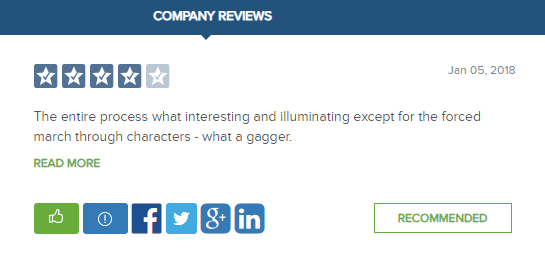
Although some writers will find it fun to imagine what superpower a character would have if they could, others just want to get down to essential facts and details.
In the redesign we’ve struck more of a balance. You can still brainstorm characters’ types (and invent your own), roles, goals, motivations, backstory, fears, flaws, strengths, habits, appearances and personalities. Yet we’ve streamlined this process to make it less of a ‘forced march’ and more of a ‘choose your own adventure’.
There are shortcuts, too. You can upload a picture to represent your character in your story outline or choose from the diverse avatars provided if you just need a fun placeholder that conveys gender or type for now.
7. Plot and character are closely interlinked
An issue with the type-bound format of the old outlining tool was that there was quite a big separation between the ‘plot’ and ‘character’ sections. Added to this was that choosing a type or role (e.g. outlining a ‘villain’ character) meant you were asked a specific set of questions that didn’t necessarily speak to your character, or how they might deviate from readers’ expectations of type.
In redesigning our writing tools, we’ve thought carefully about ways to develop and unfurl plot and character more in sync.
Instead of set types and arcs that narrow what happens, we’ve added a step for brainstorming rising and falling plot points (where situations get better or worse for characters).

These reappear in the Scene Builder, where you can develop them into full-blown scenes, or simply refer back to them for a reminder of positive and negative developments your characters could weather.
You can brainstorm as many rising and falling plot points as you like to add potential character arcs and plot arcs to your story outline. Use these to build up the ebb and flow, rise and fall, that gives a story intriguing narrative tension.
8. Ease is important
Writing a book is fun, but also a challenge, naturally. In poring over feedback on our previous version, we realized there were several ways the tool added challenges separate to writing. For example:
- Layout occasionally glitching on mobile devices
- Navigation was confusing for some
- Not completing a section meant your progress bar would sometimes show as incomplete even when you felt you’d completed a section such as ‘Plot’ or ‘Character’
- Some people struggled with writing with a black-on-beige background
We’ve made several changes to the look, feel and flow of the website:
1. The outlining tool is now mobile-friendly – outline a story anywhere
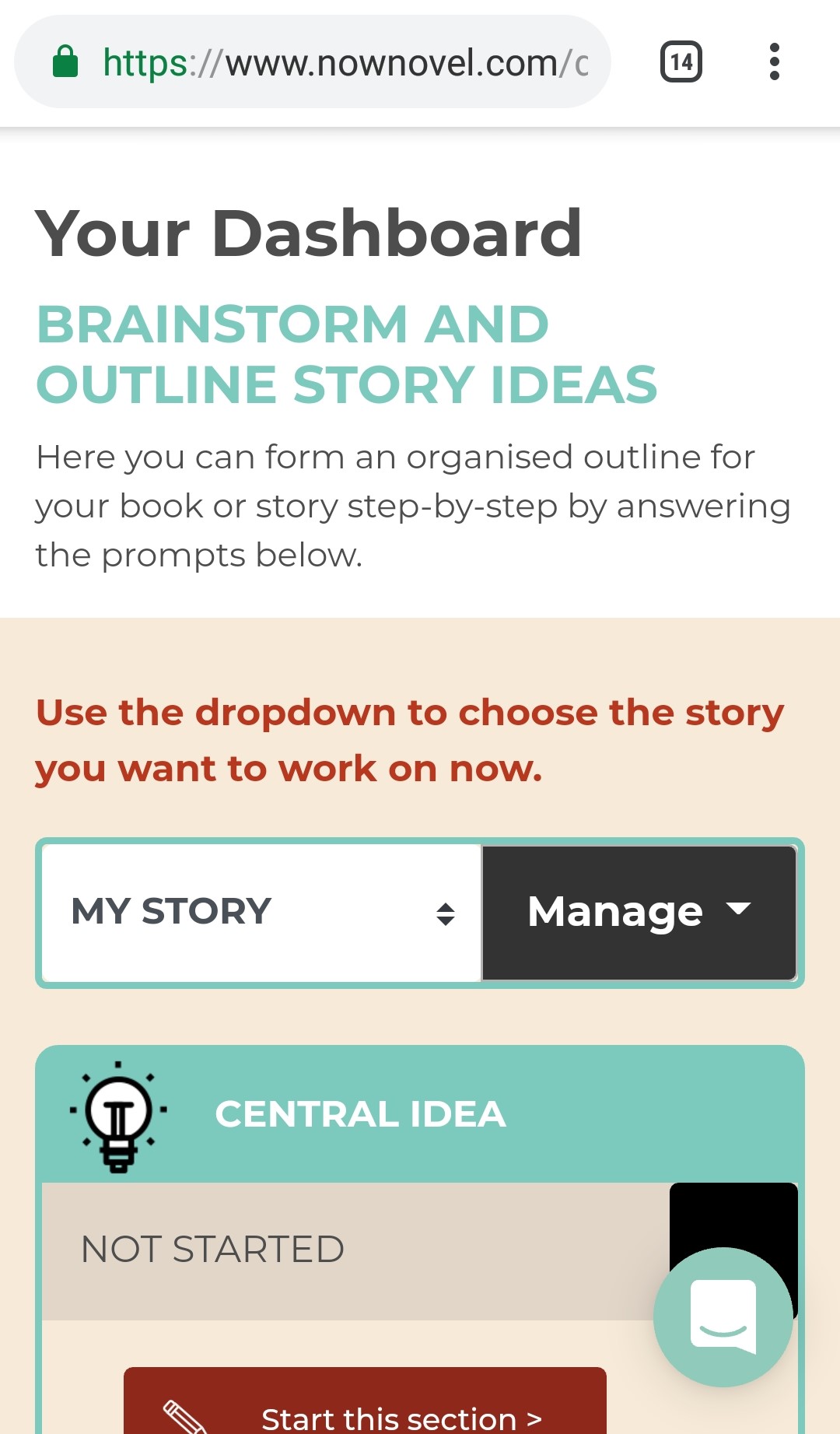
Whether you’re working in 1080P or in portrait view on your phone, the process is smoother.
2. The navigation bar at the top of each section makes finding your way around easier

Our old navigation was a lot clunkier. Now you can use the simple horizontal scrolling navigation bar at the top of each section to leap to the step in the outlining process you want to complete next (or edit or go back to an overview of characters created so far).
3. Manually mark sections complete
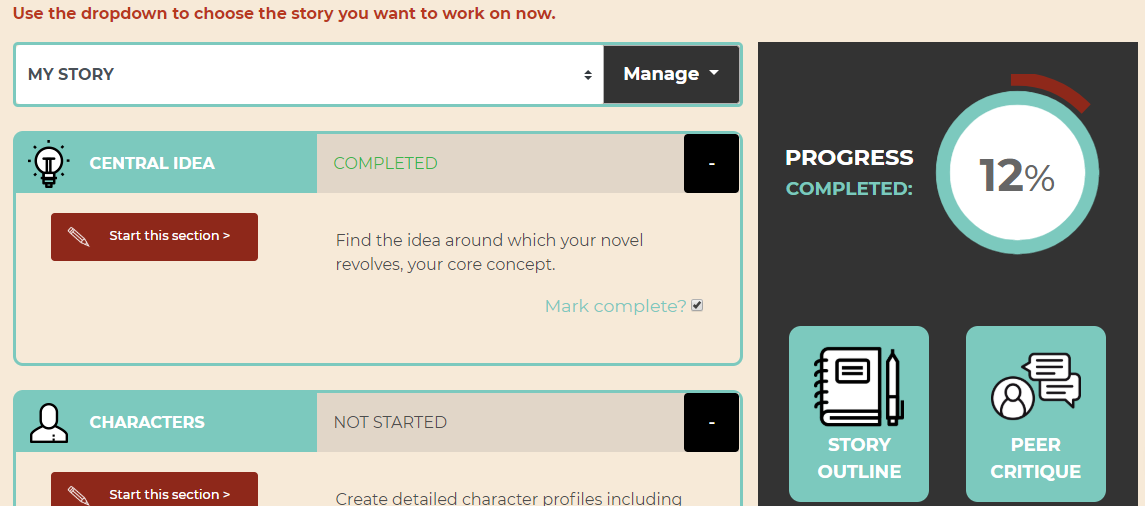
No more mandatory questions on weather or other details to make each percentage point in the progress indicator count. You can either complete each section by completing the steps from start to finish or skip any you don’t feel are applicable to your idea and mark the section complete manually using the checkbox.
4. White writing background
The text input fields in the flow of the tool provide a simpler, cleaner space to note great ideas.
Try the tool now. Create a complete story outline, including a summary you can tweak and use to pitch publishers or promote a self-published book when done.

